Walking along the golden wheat fields, passing by cows and calves, listening to crickets and frogs, watching storks and folks - my summer promenades normally continue at a galloping pace.
But my legs get cautious as soon as I locate a little hut with colorful mailboxes. It has become a fun game for me to spot them. At first glance, I thought it was a P.O. Box for farmers and shepherds working away from home during the busy summers...
Those huts, or sometimes little carriage wagons, come with a dozen painted, narrow rectangular doors. I found one at a corner of an apple orchard and another one at the edge of a forest.
By the time I encountered one behind an old barn, I finally had a chance to sneak up to take a photo:
From a closer distance, I noticed that those colorful mailboxes had some black spots. Another step closer and I was able to see that those dark dots were shaking and multiplying.
With a hesitating heavy step, I could clearly hear the buzzing bees. It was a house of honey bees! I guess the vivid paints are there to guide the bees (or to warn people), but not to lure a nosy Newly Swissed like me!
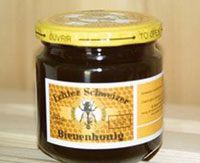
Early this spring, he asked us whether we had seen any of his runaway bees. A month later, Dimitri noticed a bee-infested bush and reported it to Mr. Hermann. Without hesitation, our neighbor approached the black knoll in his his regular street wear, took a close look and called the bumblebees Italian bees - a special kind which only belongs to him and one other beekeeper in the area.
To take them back where they belong, Mr. Hermann finally put on protective clothing and gloves. He then grabbed a shoebox-size wooden cage and wildly shook the bush against the cage, catching a bunch of falling bees. Once the queen bee falls into the cage, all the other honey bees will eventually follow and stay with her. At night, the runaways would be ready to go home with Mr. Hermann - by car!
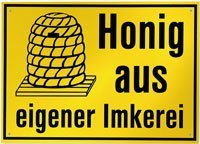

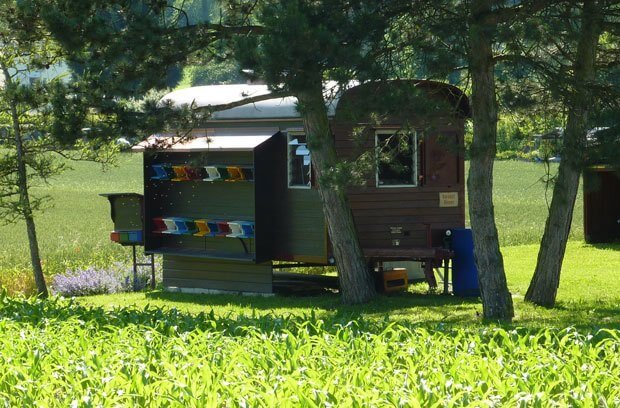
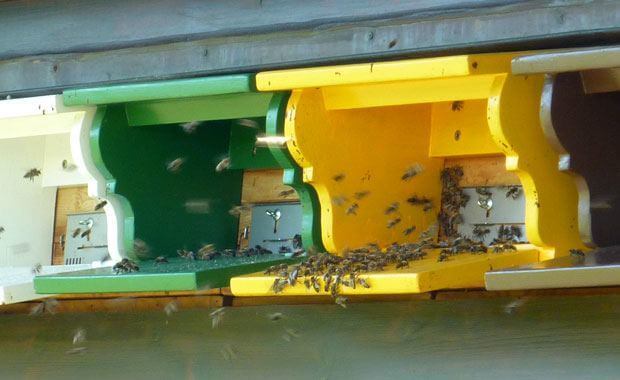
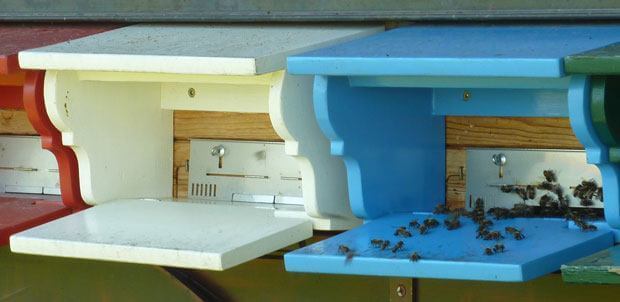
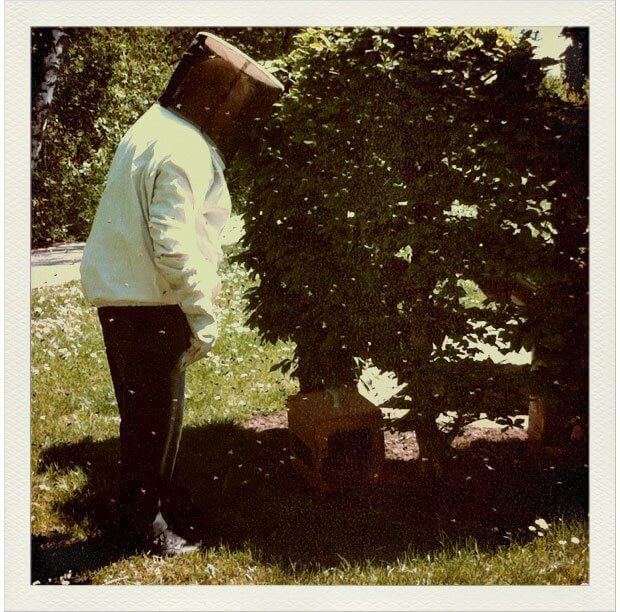

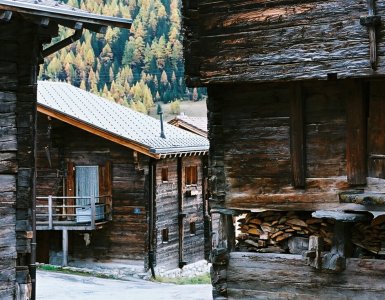


Hi Mamiko,
As you know when you visited us last year I told you I used to be a Beekeeper in New New Zealand for 3 years.
Swarming is a natural way for a bee colony to make another colony in the wild. Good Beekeepers can stop the bees that they are “farming” from swarming by good management. To do this you must replace the Queen Bee (1 in each hive) about every 2 to 3 years otherwise the hive will try to do it themselves hence that is why it Swarms! One hive – one Queen.
Did you know that it is the female bee that collects nectar to make honey & that in the summer it only lives for about six weeks! The male (Drone) does not have a sting. Bees can sense that you are afraid of them by smell, that’s why Beekeepers always are calm when working with them and they usually do so on sunny days when the workers are out of the hive collecting nectar & pollen.
Best, Fergus